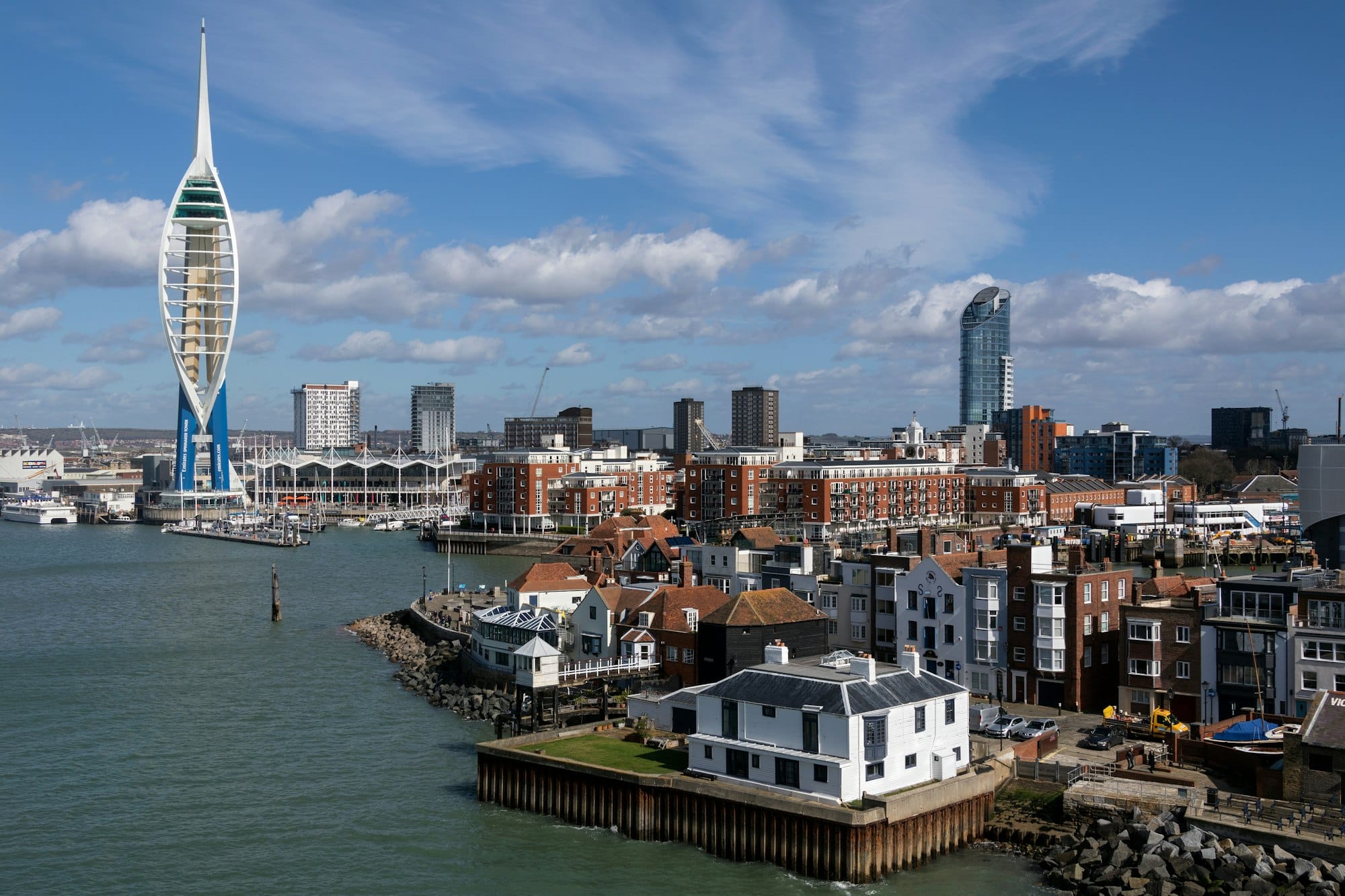Where can tourists attend in-depth explorations of 18th-century naval warfare in Portsmouth?

Portsmouth, a vibrant city located on the southern coast of England, is a treasure trove of naval history. The city played a pivotal role in the developments of 18th-century naval warfare, and it remains a beacon for those interested in maritime history. Its historic dockyard and multiple museums offer a wealth of information, allowing tourists to delve into the past and experience first-hand the might and prowess of the British Navy during the 18th century.
A Step Back in Time at Portsmouth Historic Dockyard
Portsmouth Historic Dockyard is one of the city's main attractions, and it is a must-visit for anyone interested in 18th-century naval warfare. This location was the beating heart of the naval activities during this era, and it still teems with history.
A voir aussi : Which historic homes in the Cotswolds provide the most detailed Victorian era living history experiences?
Stepping into the Portsmouth Historic Dockyard is akin to stepping back in time. Here, you can explore several famous ships that saw active service during the 18th century.
The HMS Victory is the most famous ship in the dockyard, and for good reason. As the flagship of Admiral Lord Nelson during the Battle of Trafalgar, the ship played a crucial role in the turn of the naval warfare. Today, it stands as a symbol of Britain's naval power during the 18th century. A tour of the ship will give you a detailed insight into the life of an 18th-century sailor, the strategies employed in battle, and the evolution of naval warfare.
Avez-vous vu cela : What are the best opportunities for tourists to engage in restoration projects of medieval castles in England?
Also moored at the dockyard is the HMS Warrior, a ship that marked the transition from wood to iron in shipbuilding. Although it was built in the late 19th century, it provides a glimpse into the innovations in naval technology that were spurred by the warfare techniques of the previous century.
Learning at the National Museum of the Royal Navy
If you're looking to gain a deeper understanding of the 18th-century naval warfare, the National Museum of the Royal Navy is an essential stop on your itinerary. This museum showcases a vast collection of artifacts, models, and archives that tell the story of the Royal Navy over the past five centuries.
A dedicated gallery in the museum focuses on the Age of Sail, which covers the period from 1700 to 1815. This gallery houses an extensive collection of ship models, paintings, and personal items from sailors, providing a comprehensive view of naval life during the 18th century. Here, you can learn about the innovative tactics of war, the living conditions of the sailors, and the geopolitical landscape that surrounded the naval conflicts.
Exploring the Mary Rose Museum
The Mary Rose Museum is another key destination for tourists interested in naval history. While the Mary Rose dates back to the Tudor era, visiting this museum provides a chronological context for understanding the developments that lead to the advancements seen in 18th-century naval warfare.
The museum houses the remains of the Mary Rose, Henry VIII’s flagship, which was excavated from the seabed in 1982. Along with the ship, thousands of objects were recovered, each providing a unique insight into life at sea during the earlier centuries. These artifacts help illustrate how naval technology, shipbuilding, and warfare tactics evolved over the centuries, leading up to the 18th century.
Engaging in Talks and Workshops at Portsmouth Naval Base Property Trust
The Portsmouth Naval Base Property Trust is an organization dedicated to preserving the naval heritage of Portsmouth. They regularly host talks and workshops focused on naval history, including the 18th-century naval warfare.
The trust also manages several historic naval buildings in the city, including the Shipwright’s House, Victorian Rope Walks, and The Mast Pond, all of which have relevance to 18th-century naval activities. These sites provide an authentic backdrop to the talks and workshops, providing a unique, immersive learning experience.
Experiencing Life at Sea with Living History Events
Portsmouth is renowned for its living history events that bring the past to life. These events often include reenactments of battles, demonstrations of traditional shipbuilding techniques, and opportunities to meet characters dressed in period costume.
These events provide an incredibly immersive way to understand the realities of 18th-century naval warfare. By seeing the techniques, strategies, and conditions of the era brought to life, tourists can gain a deeper appreciation for the complexities of the naval conflicts and the courage of the sailors of the time.
For those interested in historical naval warfare, Portsmouth offers a myriad of opportunities to delve into the world of 18th-century naval activities. From the majestic ships at the historic dockyard to the informative exhibits in the museums, the city provides rich, immersive experiences for any naval history enthusiast.
Action-packed Adventure at Action Stations
Action Stations is an interactive attraction located in Boathouse 6, one of the oldest structures in Portsmouth Historic Dockyard. This modern, industrial-style building offers a thrilling glimpse into the world of the Navy in the 18th century and beyond.
Within Action Stations, tourists can experience a series of physical challenges and simulations that were once part of a sailor's day-to-day life. The attractions include a climbing wall and an aerial assault course, both designed to give visitors a taste of the physical fitness required in the Royal Navy.
There is also a series of interactive displays that demonstrate various aspects of naval technology, from navigation to weapons systems. One of the standout attractions is the Command Approved Virtual Warfare experience, where visitors can take on the role of a naval officer in a state-of-the-art simulator.
Alongside these high-tech, hands-on activities, Action Stations also hosts a range of exhibits detailing the history of naval warfare. Full-sized models of 18th-century warships are on display, along with a variety of artifacts, documents, and artwork. These exhibits offer a comprehensive insight into naval battles, shipbuilding techniques, and the lifestyle of sailors in the 18th century.
Immersive Experience at The D-Day Story
The D-Day Story, located on the seafront in Southsea, offers an immersive experience that complements Portsmouth's naval history. While it largely focuses on the events of D-Day during World War II, it also provides valuable context and understanding of the evolution of naval warfare after the 18th century.
The museum’s interactive displays present a detailed account of Operation Overlord, the codename for the Allied invasion of Normandy. Through personal accounts, photographs, and memorabilia, visitors can get a sense of the massive scale and significance of this naval operation.
While the museum mainly centers on World War II, it also highlights the technological advancements and tactical shifts in naval warfare from the 18th century onwards. This historical overview is crucial for understanding how naval warfare progressed and transformed over the centuries, making it an essential visit for anyone interested in the broader scope of naval history.
Conclusion
Portsmouth offers a rich and varied exploration of 18th-century naval warfare for tourists, ranging from the architectural grandeur of the historic dockyard to the detailed exhibits in the museums. Every corner of the city resonates with history, promising an enlightening and immersive journey into the past for all visitors.
Whether it's climbing aboard Admiral Lord Nelson's flagship, the HMS Victory, examining the personal items of sailors at the National Museum of the Royal Navy, or participating in an interactive exhibit at Action Stations, Portsmouth provides a unique and comprehensive insight into naval history.
By engaging with the vivid reenactments, absorbing the wealth of information in the museums, and stepping into the shoes of an 18th-century sailor, visitors can truly appreciate the scale, complexity, and importance of naval warfare. This historical exploration not only informs but also inspires, reminding us all of the enduring importance of naval power and the incredible feats of courage and resilience displayed by sailors throughout history.
